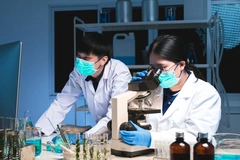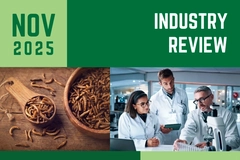Microbial “dark matter” of oral microbiome explored via genetic manipulation to open new biotech pathways

12 Sep 2023 --- A team of US-based scientists posit genetic manipulation to uncover detailed information about a “puzzling” epibiotic bacteria in the oral microbiome. A new study from the University of Washington School of Medicine, endeavors to understand the epibiotic’s lifestyle and its function in transporting nutrients.
The tiny, mysterious microbes, Patescibacteria, exhibit unusual survival traits, which intrigue scientists because it’s difficult to understand how they stay alive. Although it’s a diverse group inhabiting many environments, scientists can only cultivate a few types.
“While metagenomics can tell us which microbes live on and within our bodies, the DNA sequences alone do not give us insight into their beneficial or detrimental activities, especially for organisms that have never before been characterized,” says Nitin Baliga of the Institute for System Biology in Seattle, US, which contributed computational and systems analyses to the study.

“The ability to genetically perturb Patescibacteria opens up the possibility of applying a powerful systems analysis lens to rapidly characterize the biology of obligate epibionts,” he says.
Wacky lifestyle of epibionts
The researchers know from a few types grown in the laboratory that Patescibacteria live on the cell surfaces of larger host microbes and lack the genes needed to make the molecules for life, such as amino acids, the building blocks of protein.
Patescibacteria also don’t have the genes to make fatty acid molecules necessary to form membranes or the nucleotides in DNA. The researchers speculate that many of these bacteria rely on others to grow.
The study published in Cell takes a rare peek into the molecular mechanisms of the bacteria’s “unusual” lifestyle, which is considered a breakthrough in the genetic manipulation of these bacteria – an advance that has opened new research directions. Time-lapse images of the bacteria growing with their host bacteria (Credit: Yaxi Wang, Wai Pang Chan and Scott Braswell/University of Washington).
Time-lapse images of the bacteria growing with their host bacteria (Credit: Yaxi Wang, Wai Pang Chan and Scott Braswell/University of Washington).
The Patescibacteria analyzed in the current study belong to the Saccharibacteria group, which lives in various land and water environments but is best known for residing in the human mouth. As far as the research knows, they have formed part of the oral microbiome since the Middle Stone Age.
In the oral microbiome, Saccharibacteria need the company of Actinobacteria, which serves as the host. The scientists used genetic manipulation to identify the genes that help Saccharibacterium grow.
“We are tremendously excited to have this initial glimpse into the functions of the unusual genes these bacteria harbor. By focusing our future studies on these genes, we hope to unravel the mystery of how Saccharibacteria exploit host bacteria for their growth,” says Joseph Mougous, lead author of the study and professor of microbiology at the University of Washington School of Medicine and the Howard Hughes Medical Institute, US.
The interdisciplinary study has been facilitated by the newly created Microbial Interactions and Microbiome Center (mim_c), directed by Mougous.
Venturing into microbial dark matter
Patescibacteria are among the poorly understood bacteria whose DNA sequences surface in large-scale genetic analyses of genomes. This genetic material is termed “microbial dark matter” in scientific circles because little is known about the functions it encodes.
The researchers believe that further genetic manipulation trials will provide more understanding of this bacteria’s role as “the rich reserves of microbial dark matter these organisms contain” and potentially uncover unexplored biological mechanisms. Researcher Larry Gallagher in the microbiology lab at the University of Washington School of Medicine (Credit: S. Brook Peterson/University of Washington).
Researcher Larry Gallagher in the microbiology lab at the University of Washington School of Medicine (Credit: S. Brook Peterson/University of Washington).
Microbial dark matter probably contains information about biochemical pathways with potential biotechnology applications. It also holds clues to the molecular activities that support a microbial ecosystem and the cell biology of the assorted microbial species gathered in that system.
The current study also found cell surface structures that help Saccharibacteria attach to host cells and a secretion system for transporting nutrients. Another application of the researchers’ work was the generation of Saccharibacteria cells that express fluorescent proteins. They used the cells to perform time-lapse microscopic fluorescent imaging of the bacteria growing with their host bacteria.
Some Saccharibacteria serve as mother cells by adhering to the host cell and repeatedly budding to generate small, swarmer offspring. The little ones move on to search for new host cells.
The study was supported by grants from the National Institutes of Health, the National Science Foundation, the Department of Defense’s Defense Threat Reduction Agency, the Bill & Melinda Gates Foundation and the Welch Foundation.
This study builds upon a growing body of research into the gut microbiome’s effects on overall health. Scientists previously unraveled how native bacteria may be harnessed to induce “persistent and potentially even curative” therapeutic changes in the gut, such as long-term therapy for type 2 diabetes.
By Inga de Jong













